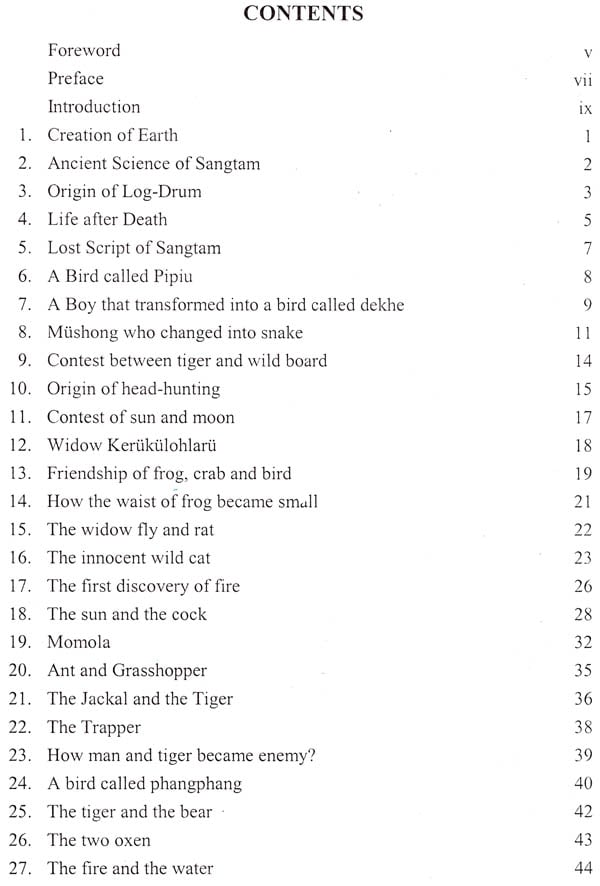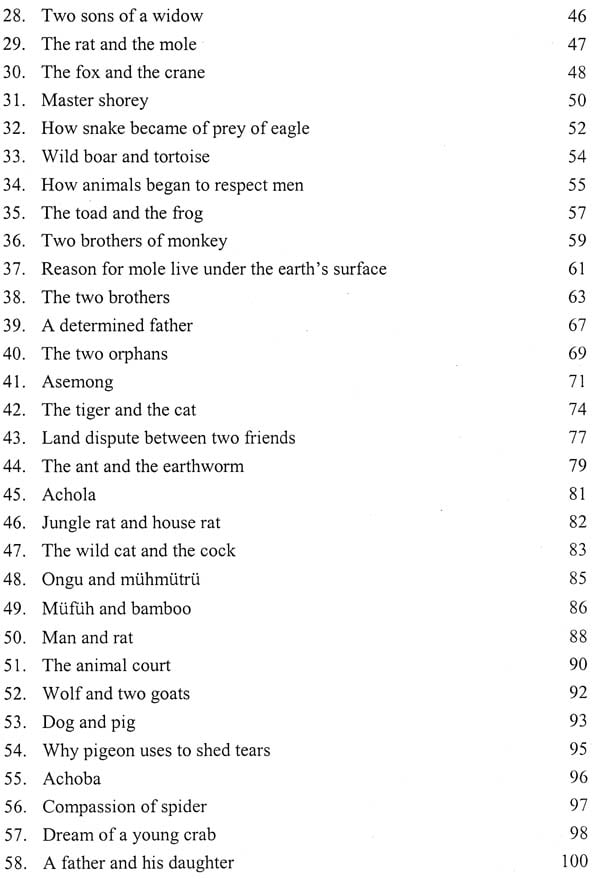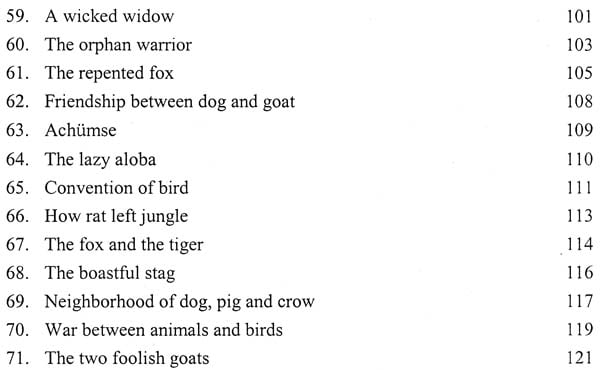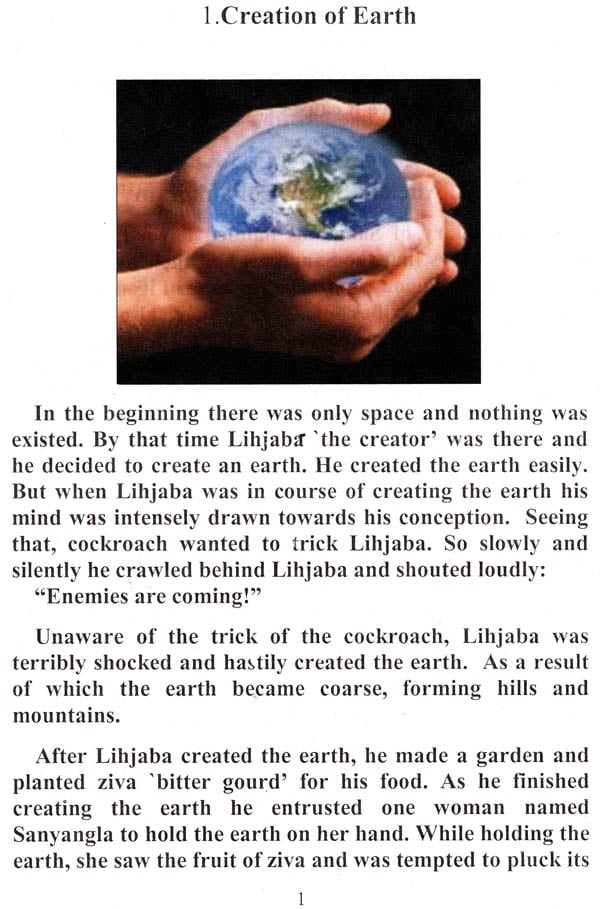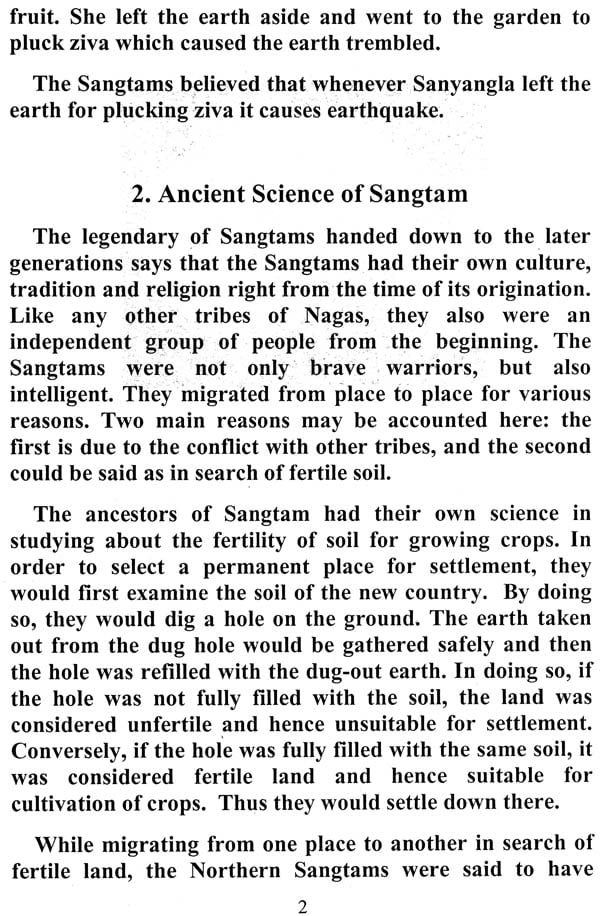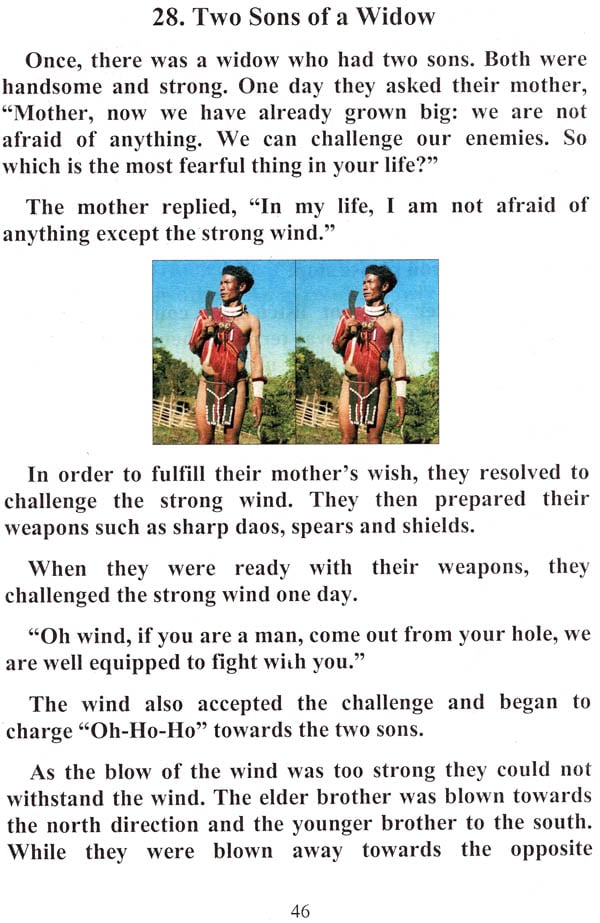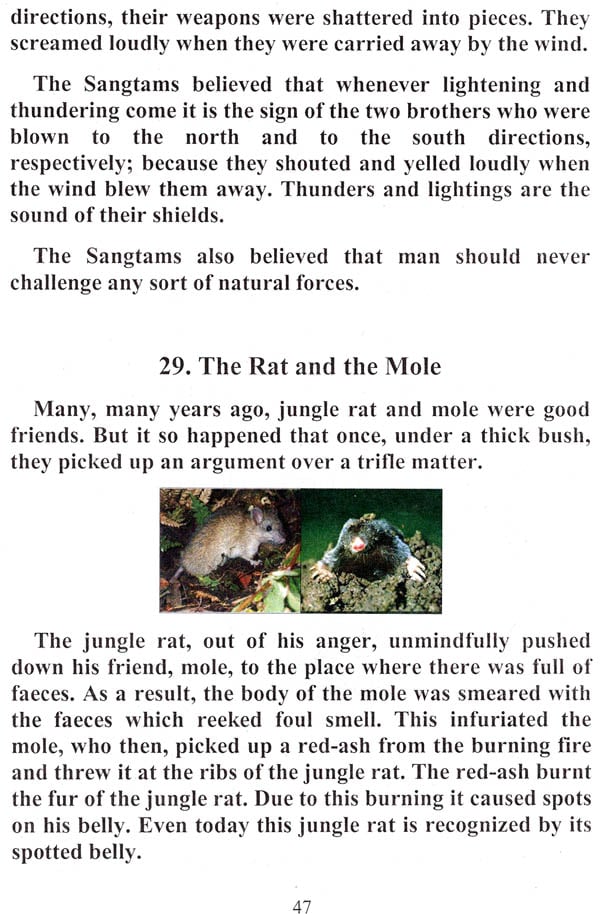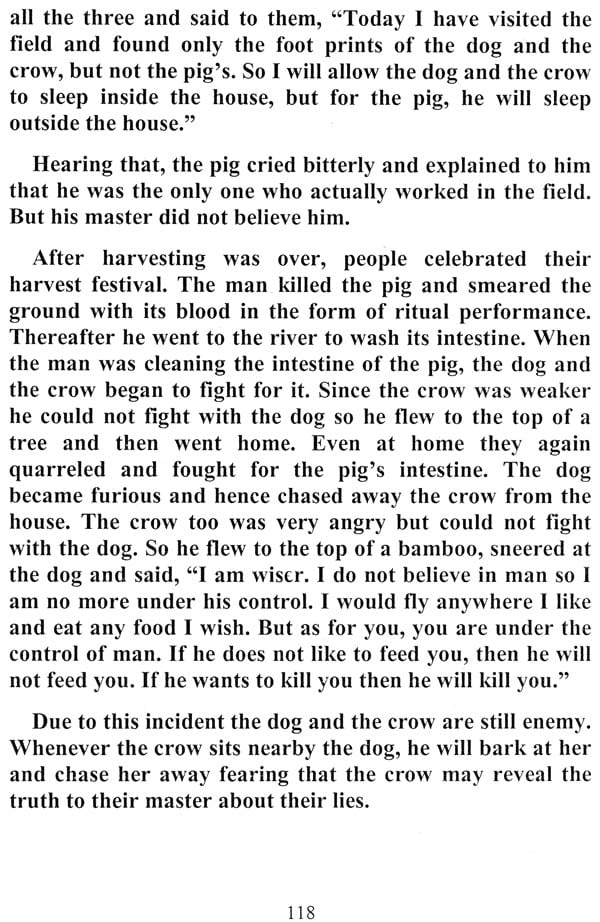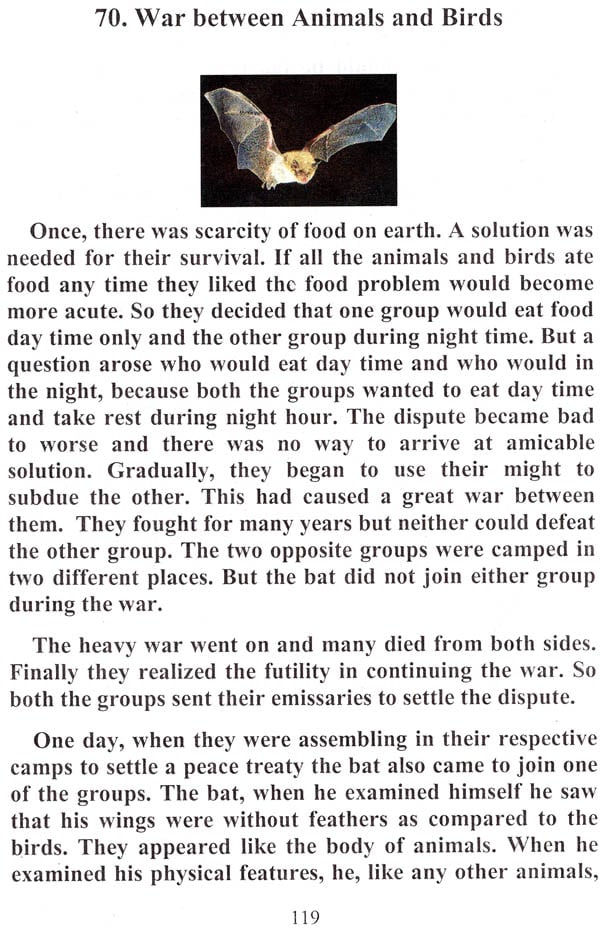
Sangtam Folktales
Book Specification
| Item Code: | NAV940 |
| Author: | Tsalongse Chodongse and Kedutso Kapfo |
| Publisher: | Central Institute Of Indian Languages, Mysore |
| Language: | English |
| Edition: | 2009 |
| ISBN: | 8173421927 |
| Pages: | 136 (71 colored Illustrations) |
| Cover: | PAPERBACK |
| Other Details | 9.50 X 7.50 inch |
| Weight | 310 gm |
Book Description
40 years ago when the Central Institute of Indian Languages was set up, one of its main objectives was to act as a nodal agency for language related research in India. The study of folklore engaged the attention of the Institute right from its inception. The folklore unit of the Institute became a leader in the study of folklore across the country. This must be recognized because prior to that the accounts of folklore were confined to report of British Administrators or the Missionaries and it was only Central Institute of Indian Languages which wanted to establish the study of folklore in the matrix of inquiry into the nature of human mind, culture and society. The Institute did commendable work in the area of tribal languages and many of the linguists collected several folk materials for textual analysis. Several international scholars were engaged in dialogue on the subject with experts from the Institute. However, a great deal still needs to be done for the Institute to revitalize folklore studies since they are of great importance.
"Folklore as currently understood goes beyond religious of supernatural beliefs and practices, and compasses the entire body of social tradition whose chief vehicle of transmission is oral or outside institutional channels". It is, often, a source of history for predominantly oral languages. Since Nagas are known to have a very rich component of folklore which is being passed down the generations through word of mouth, the documentation of folk materials is bound to be an important integral component of the development of the language and culture of the people.
There is also a concern in many circles that just as languages are viewed as endangered, the entire cultural fabric is also under threat because of rapid advancement in technology and social change. Modern societies are being de-linked from their ancient tradition and unless attempts are made now indigenous knowledge system links to the folklore will also be lost. It is, therefore, commendable that in this collection "the authors have prepared a scholarly collection of Sangtam folktales which combines legend, dance, ballad and ritual, carnival and so on in relation with social structure and biology and ecology that still thrive in oral literature among the Sangtam community. The tales reflect the dynamic character of Naga folk culture as a whole and the Sangtam community, in particular. The central theorem one could find from this combination of Sangtam folktales is, they vividly portray the deep and passionate lives of the ancestors of the Sangtam community and the way they treated animals as a part of human society in the ancient world.
We hope this collection will help not only preserve the folk literature of Sangtam community, but also become a valuable contribution to the folklore studies in the country. I congratulate the authors.
This book containing folktales of Sangtam Naga is a completely new English version for Sangtam community in the history of Sangtam literature. It has been our long aspiration to compile Sangtam folktales and publish it in a book-form for the past many years. But due to want of dedicated experts and also financial constraints it had been delayed for years together. In the meantime Shri Tsalongse Chodongse under the guidance and inspiration of Dr. Kedutso Kapfo, Associate Professor, CIIL, Mysore, has sacrificed and dedicated his valuable time to research on this project. He had collected many Sangtam folktales from elders and also from other available sources. This collection is particularly essential for our community to preserve our rich folk culture and tradition for generations to come.
For review and comment, the Sangtam Literature Committee Members selected the following subcommittee members to edict the original manuscript. Dr. N. Meren, retired Medical Director, Rev. Imtiba, S.B.C., Kohima and Shri Miithingnyuba, Jt. Director, Employment Exchange, Nagaland, Kohima. Accordingly, they had perused the manuscript minutely and edited it in the year 2007.
This will be the first edition of Sangtam Naga folktales for Sangtam community published by CIIL, Mysore. I, on behalf of the Sangtam Literature Community, express our deep appreciation. We are indebted to the concerned authority of CIIL, Mysore, for publishing this book. I hope that readers of this book will get immense benefit.
Nagas are spread over Nagaland, part of Manipur, Arunachal Pradesh, Burma and Assam. One of the uniqueness of the Nagas is that, wherever they may be, they passionately lived in folklorist’s lives. Every tribe of the Nagas has their own rich folk literature. There 1s however striking contrast between modern technology and folk tradition. The coming of modem education and technology has immensely benefited younger generation in their advancement of knowledge. At the same time, it also endangers the survival of their culture and tradition. The present day generation does not get much opportunity to listen to their folktales as much as their older generations did.
The tradition of night-hour gatherings in the village played major role in transmission of folktales from generation to generation among the Nagas. However, this tradition is almost extinct even in the village culture today. Causes of such extinction are several. Three major reasons may be accounted here. First is the spread of Christianity in the villages. The tradition of night-hour gatherings where the young adults listened to the folktales told by their elders had been replaced by church services where they only had to listen to the sermons of the preachers. Second 1s literacy which brings modern education, technology and urbanization that had penetrated in the village culture. Besides televisions, varieties of children’s stories, comics and so on are available in schools and in the markets. Third is schooling. Lessons incorporated in language subjects are from outside source only. Even in mother tongue textbooks, most of the stories are translated from outside source, though are appealing to the children. There is hardly any local origin. This had caused negative impact on the children. Directly or indirectly, children have taken their folktales as something sub-standard and not worthy of listening to. Incorporating legendary stories of native people in the school textbooks can play not only a mere source of information about the lives of their ancestors, but also can play an important role in mental building and personality development of children. With this objective, the Central Institute of Indian Languages, Mysore, in collaboration with the Textbook Section, Department of School Education, Govt. of Nagaland, had attempted to collect folktales from various tribes of Nagas so as to include them in mother tongue textbooks.
Compilation of these Sangtam folktales is part of this objective. They contain rich information of legendary history from the creation of earth by Lihjaba to the growth of the great family houses of the Sangtans, one of the tribes inhabited in the eastern part of Nagaland.
We wish to acknowledge our gratitude to the tellers of these folktales. This compilation was possible only because of their sincere contribution. Many tellers had contributed more, but we have not included some of the stories told by them in our compilation. The reason is that, according to us, they do not appear to be of Sangtam origin, but from some other sources. We request the tellers to pardon us if there were any mistake in our perception. Only the tales whom we perceived as Sangtam origin are included in this compilation.
We also express our appreciation to Sangtam Literature Committee for their cooperation and encouragement. Finally, we thank the Director, Central Institute of Indian Languages, Mysore, for taking up responsibility for publication.
**Contents and Sample Pages**
